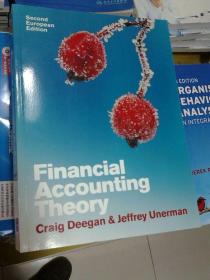
Advanced Microeconomic Theory
¥ 280 3.3折 ¥ 852.1 八五品
仅1件
作者Geoffrey A.Jehle(杰弗里·A.杰里),Philip J.Reny(菲利普·J.瑞尼) 著
出版社Prentice Hall
出版时间2013-07
版次3
装帧平装
上书时间2024-09-01
- 店主推荐
- 最新上架
商品详情
- 品相描述:八五品
- 有字迹
图书标准信息
- 作者 Geoffrey A.Jehle(杰弗里·A.杰里),Philip J.Reny(菲利普·J.瑞尼) 著
- 出版社 Prentice Hall
- 出版时间 2013-07
- 版次 3
- ISBN 9780273731917
- 定价 852.10元
- 装帧 平装
- 开本 其他
- 纸张 胶版纸
- 页数 672页
- 正文语种 英语
- 【内容简介】
- ‘AdvancedMicroeconomicTheory’remainsarigorous,up-to-datestandardinmicroeconomics,givingallthecoremathematicsandmoderntheorytheadvancedstudentmustmaster. Thisstudent-friendlytext,withitsefficienttheorem-prooforganization,andmanyexamplesandexercises,isuniquelyeffectiveinadvancedcourses.
- 【作者简介】
-
杰弗里·A·杰里(Geoffrey A.Jehle),1983年毕业于普林斯顿大学,获博士学位。目前任美国瓦瑟学院(Vassar College)经济学教授,曾在普林斯顿大学、耶鲁大学、欧洲工商管理学院等学校任教。
菲利普·J·瑞尼(Philip J.Reny),1988年毕业于普林斯顿大学,获经济学博士学位。目前任芝加哥大学经济系教授,曾在加拿大西安大略大学、匹兹堡大学任教。 - 【目录】
-
PREFACE PART 1: ECONOMIC AGENTS
CHAPTER 1: CONSUMER THEORY
1.1 Primitive Notions
1.2 Preferences and Utility
1.2.1 Preference Relations
1.2.2 The Utility Function
1.3 The Consumer's Problem
1.4 Indirect Utility and Expenditure
1.4.1 The Indirect Utility Function
1.4.2 The Expenditure Function
1.4.3 Relations Between the Two
1.5 Properties of Consumer Demand
1.5.1 Relative Prices and Real Income
1.5.2 Income and Substitution Effects
1.5.3 Some Elasticity Relations
1.6 Exercises
CHAPTER 2: TOPICS IN CONSUMER THEORY
2.1 Duality: A Closer Look 2.1.1 Expenditure and Consumer Preferences
2.1.2 Convexity and Monotonicity
2.1.3 Indirect Utility and Consumer Preferences
2.2 Integrability
2.3 Revealed Preference
2.4 Uncertainty
2.4.1 Preferences
2.4.2 Von Neumann-Morgenstern Utility
2.4.3 Risk Aversion
2.5 Exercises
CHAPTER 3: THEORY OF THE FIRM
3.1 Primitive Notions
3.2 Production
3.2.1 Returns to Scale and Varying Proportions
3.3 Cost
3.4 Duality in Production
3.5 The Competitive Firm
3.5.1 Profit Maximisation
3.5.2 The Profit Function
3.6 Exercises
PART 2: MARKETS AND WELFARE
CHAPTER 4: PARTIAL EQUALIBRIUM
4.1 Perfect Competition
4.2 Imperfect Competition
4.2.1 Cournot Oligopoly
4.2.2 Bertrand Oligopoly
4.2.3 Monopolistic Competition
4.3 Equilibrium and Welfare
4.3.1 Price and Individual Welfare
4.3.2 Efficiency of the Competitive Outcome
4.3.3 Efficiency and Total Surplus Maximisation
4.4 Exercises
CHAPTER 5: GENERAL EQUALIBRIUM
5.1 Equilibrium in Exchange
5.2 Equilibrium in Competitive Market Systems
5.2.1 Existence of Equilibrium
5.2.2 Efficiency
5.3 Equilibrium in Production
5.3.1 Producers
5.3.2 Consumers
5.3.3 Equilibrium
5.3.4 Welfare
5.4 Contingent Plans
5.4.1 Time
5.4.2 Uncertainty
5.4.3 Walrasian Equilibrium with Contingent Commodities
5.5 Core and Equilibria
5.5.1 Replica Economies
5.6 Exercises
CHAPTER 6: SOCIAL CHOICE AND WELFARE
6.1 The Nature of the Problem
6.2 Social Choice and Arrow's Theorem
6.2.1 A Diagrammatic Proof
6.3 Measurability, Comparability, and Some Possibilities
6.3.1 The Rawlsian Form
6.3.2 The Utilitarian Form
6.3.3 Flexible Forms
6.4 Justice
6.5 Social Choice and the Gibbard-Satterthwaite Theorem
6.6 Exercises
PART 3: STRATEGIC BEHAVIOUR
CHAPTER 7: GAME THEORY
7.1 Strategic Decision Making
7.2 Strategic Form Games
7.2.1 Dominant Strategies
7.2.2 Nash Equilibrium
7.2.3 Incomplete Information
7.3 Extensive Form Games
7.3.1 Game Trees: A Diagrammatic Representation
7.3.2 An Informal Analysis of Take-Away
7.3.3 Extensive Form Game Strategies
7.3.4 Strategies and Payoffs
7.3.5 Games of Perfect Information and Backward Induction Strategies
7.3.6 Games of Imperfect Information and Subgame Perfect Equilibrium
7.3.7 Sequential Equilibrium
7.4 Exercises
CHAPTER 8: INFORMATION ECONOMICS 8.1 Adverse Selection
8.1.1 Information and the Efficiency of Market Outcomes
8.1.2 Signalling
8.1.3 Screening
8.2 Moral Hazard and the Principal-Agent Problem
8.2.1 Symmetric Information
8.2.2 Asymmetric Information
8.3 Information and Market Performance
8.4 Exercises
CHAPTER 9: AUCTIONS AND MECHANISM DESIGN
9.1 The Four Standard Auctions
9.2 The Independent Private Values Model
9.2.1 Bidding Behaviour in a First-Price, Sealed-Bid Auction
9.2.2 Bidding Behaviour in a Dutch Auction
9.2.3 Bidding Behaviour in a Second-Price, Sealed-Bid Auction
9.2.4 Bidding Behaviour in an English Auction 9.2.5 Revenue Comparisons
9.3 The Revenue Equivalence Theorem
9.3.1 Incentive-Compatible Direct Selling Mechanisms: A Characterisation
9.3.2 Efficiency
9.4 Designing a Revenue Maximising Mechanism
9.4.1 The Revelation Principle
9.4.2 Individual Rationality
9.4.3 An Optimal Selling Mechanism
9.4.4 A Closer Look at the Optimal Selling Mechanism
9.4.5 Efficiency, Symmetry, and Comparison to the Four Standard Auctions
9.5 Designing Allocatively Efficient Mechanisms
9.5.1 Quasi-Linear Utility and Private Values
9.5.2 Ex Post Pareto Efficiency
9.5.3 Direct Mechanisms, Incentive Comparability and the Revelation Principle
9.5.4 The Vickery-Clarke-Groves Mechanism
9.5.5 Achieving a Balanced Budget: Expected Externality Mechanisms
9.5.6 Property Rights, Outside Options, and Individual Rationality Contraints
9.5.7 The IR-VCG Mechanism: Sufficiency of Expected Surplus
9.6 Exercises
MATHEMATICAL APPENDICES
CHAPTER A1: SETS AND MAPPINGS
A1.1 Elements of Logic
A1.1.1 Necessity and Sufficiency
A1.1.2 Theorems and Proofs
A1.2 Elements of Set Theory
A1.2.1 Notation and Basic Concepts
A1.2.2 Convex Sets
A1.2.3 Relations and Functions
A1.3 A Little Topology
A1.3.1 Continuity
A1.3.2 Some Existence Theorems
A1.4 Real-Valued Functions
A1.4.1 Related Sets
A1.4.2 Concave Functions
A1.4.3 Quasiconcave Functions
A1.4.4 Convex and Quasiconvex Functions
A1.5 Exercises
CHAPTER A2: CALCULUS AND OPTIMISATION
A2.1 Calculus
A2.1.1 Functions of a Single Variable
A2.1.2 Functions of Several Variables
A2.1.3 Homogeneous Functions
A2.2 Optimisation
A2.2.1 Real-Valued Functions of Several Variables
A2.2.2 Second-Order Conditions
A2.3 Constrained Optimisation
A2.3.1 Equality Constraints
A2.3.2 Lagrange's Method
A2.3.3 Geometric Interpretation
A2.3.4 Second-Order Conditions
A2.3.5 Inequality Constraints
A2.3.6 Kuhn-Tucker Conditions
A2.4 Optimality Theorems
A2.5 Separation Theorems
A2.6 Exercises
LIST OF THEOREMS LIST OF DEFINITIONS HINTS AND ANSWERS REFERENCES INDEX
相关推荐
-

PRINCIPLES OF MICROECON0MICS
八五品天津
¥ 100.00
-

PRINCIPLES OF MICROECON0MICS
八五品天津
¥ 100.00
-

advanced
八五品濮阳市
¥ 5.00
-

Advanced
九品东莞
¥ 3.00
-

AdVanced
九品酒泉
¥ 100.00
-

ADVANCED
九五品苏州
¥ 30.00
-

Advanced Accounting
九品天津
¥ 40.00
-

Advanced Econometrics
八五品北京
¥ 150.00
-

advanced english
八五品北京
¥ 5.00
-

Advanced taekwondo
八五品淄博
¥ 80.00
— 没有更多了 —






![Business and Society: Ethics and Stakeholder Management 商业与社会 [平装]](https://www0.kfzimg.com/G05/M00/DA/0E/p4YBAFhGuDCAZRcuAADN9aeQrVk555_s.jpg)


















以下为对购买帮助不大的评价